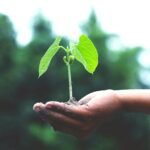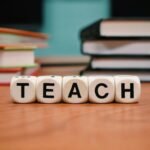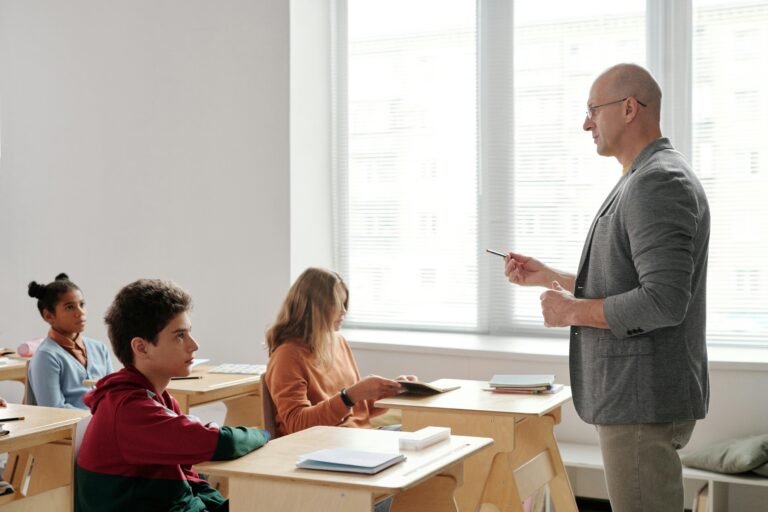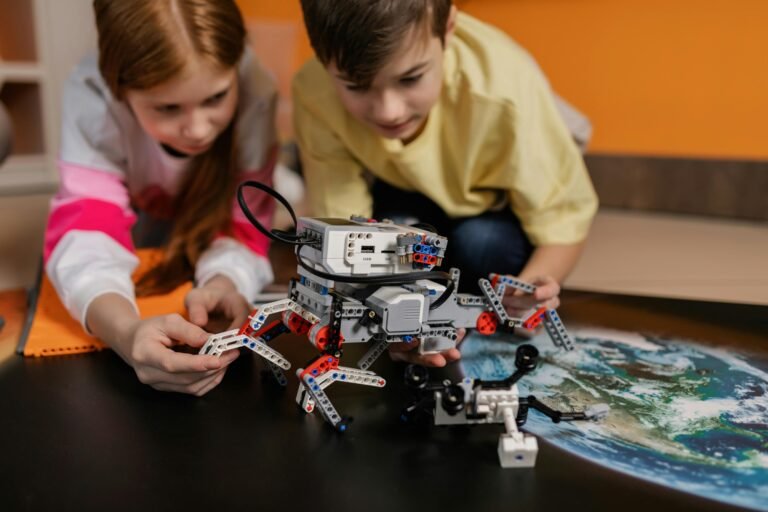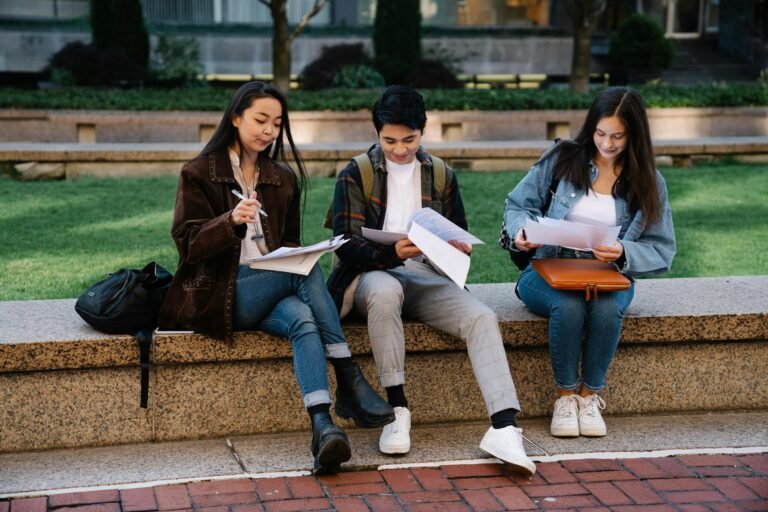Project Based Learning (PBL) in high school empowers students to take charge of their education through solving real-world problems and creating meaningful, authentic products. Whether writing slam poetry about social issues, building wind turbines, or launching advocacy campaigns, PBL fosters deep learning and helps students develop essential 21st-century skills—collaboration, creativity, communication, and critical thinking.
This guide offers grade-specific prompts across core subject areas for grades 9–12. Each prompt includes:
- A Driving Question to spark inquiry
- A Brief Description of the student experience
- Possible Products/Outcomes students can share, publish, or reflect on
Project Based Learning Prompts for High School: Grades 9–12 Prompts That Make Learning Matter
Grade 9: Identity, Expression & Innovation
Language Arts – Driving Question: How can we write and perform a slam poem about a social issue?
Description:
Students explore slam poetry as a medium for social commentary. They research a chosen issue (e.g., racism, climate change, bullying), write poems using literary and rhetorical devices, and perform for peers.
Outcomes:
- Original slam poems
- Research notes or sources
- Peer performances
- Feedback or evaluations
Math – Driving Question: How can we create and analyze a budget for a trip or event?
Description:
Students apply financial literacy to plan a personal or group trip/event. They research expenses, use spreadsheets to build and analyze budgets, and present their findings in reports or visual presentations.
Outcomes:
- Budget plans in spreadsheets
- Cost analysis and graphs
- Reports and presentations
- Optimization recommendations
Science – Driving Question: How can we create and test a wind turbine?
Description:
Students explore renewable energy by designing, building, and testing wind turbines. They study efficiency, power output, and real-world applications, documenting the engineering design process throughout.
Outcomes:
- Working wind turbines
- Voltage/current/power data
- Performance graphs
- Demonstration videos or presentations
Social Studies – Driving Question: How can we create a podcast about a historical event or figure?
Description:
Students research a significant historical topic, write podcast scripts, record and edit their episodes, and publish them online. They evaluate primary and secondary sources for accuracy and bias.
Outcomes:
- Published podcast episodes
- Scripts with citations
- Online platforms or class listening sessions
- Feedback or listener comments
Grade 10: Voice, Advocacy & Creative Production
Language Arts – Driving Question: How can we write and publish our own magazine articles?
Description:
Students explore genres of magazine writing—news, feature, opinion—and write on topics of their choice. They go through a full editorial cycle: researching, drafting, revising, and publishing.
Outcomes:
- Magazine articles
- Online or print publications
- Peer and teacher feedback
Language Arts – Driving Question: How can we write and publish our own poetry?
Description:
Students choose poetic forms and themes (e.g., free verse, haiku, sonnet), use figurative language and sound devices, and compile their poetry for publication or performance.
Outcomes:
- Poetry collections
- Digital or print books
- Readings or showcases
- Peer feedback
Social Studies – Driving Question: How can we create a blog about a social movement or cause?
Description:
Students research movements (e.g., LGBTQ+ rights, animal welfare), evaluate media perspectives, and create blog posts to raise awareness and persuade readers.
Outcomes:
- Active blogs with multiple entries
- Blog proposals outlining audience, tone, and purpose
- Reader comments or analytics
Social Studies – Driving Question: How can we create a documentary about a current issue or event?
Description:
Students produce short documentaries by researching current issues (e.g., immigration, climate change), scripting interviews or segments, filming and editing, then sharing them online or in class.
Outcomes:
- Student-made documentaries
- Proposals and research plans
- Online or class screenings
- Feedback from peers and audiences
Grade 11: Stories, Systems & Civic Engagement
Language Arts – Driving Question: How can we write and publish our own short stories?
Description:
Students explore fiction writing, choose genres/themes, draft and revise short stories, and publish them for authentic audiences.
Outcomes:
- Compiled story collections
- Published anthologies
- Peer reviews or class discussions
Language Arts – Driving Question: How can we write and publish our own essays?
Description:
Students write essays (argumentative, informative, personal), engaging with evidence, tone, and clarity. They refine through revision and publish in class blogs, zines, or contests.
Outcomes:
- Essay collections
- Submissions to publications or competitions
- Feedback or teacher rubrics
Social Studies – Driving Question: How can we create a campaign for a social issue or cause?
Description:
Students develop real-world campaigns—on mental health, climate action, or housing insecurity—using research, marketing strategies, and advocacy techniques. They measure their impact with surveys and analytics.
Outcomes:
- Campaign materials (flyers, videos, social posts)
- Campaign proposals
- Data reports on reach/impact
- Reflections on effectiveness
Social Studies – Driving Question: How can we create a mock trial based on a historical or current case?
Description:
Students simulate trials (e.g., Salem Witch Trials, a modern Supreme Court case). They play legal roles, research facts and legal precedents, and perform their trials for class or community.
Outcomes:
- Scripts and role descriptions
- Trial performances
- Legal research files
- Peer or teacher evaluations
Grade 12: Synthesis, Strategy & Real-World Readiness
Math – Driving Question: How can we create and analyze a survey about a topic of our choice?
Description:
Students use statistics to explore topics like music preferences or media habits. They design surveys, collect and analyze data, and present conclusions through graphs, charts, and presentations.
Outcomes:
- Survey results
- Visualized data (infographics, dashboards)
- Final reports or slideshow presentations
- Interpretation and conclusions
Science – Driving Question: How can we create a science fair project that solves a real-world problem?
Description:
Students design science experiments or engineering solutions to issues like air quality or water purification. They follow the scientific method and present their work in a fair-style format.
Outcomes:
- Lab reports and data sets
- Display boards or videos
- Judged presentations
- Prizes or awards (optional)
Why This Kind of PBL Works in High School
High school students are preparing for post-secondary education, careers, and civic life. Project-Based Learning is especially powerful at this stage because it makes academic content relevant, rigorous, and student-driven.
1. Promotes Real-World Application
Whether budgeting for events, launching podcasts, or engineering clean energy solutions, students are doing work that reflects real-life challenges—and building readiness for life after high school.
2. Fosters Independence & Accountability
PBL empowers students to choose topics, set goals, and manage long-term timelines. These experiences build executive function, time management, and self-direction—critical college and career skills.
3. Encourages Civic & Social Awareness
By writing about social issues, starting campaigns, or investigating causes, students develop empathy, digital literacy, and a deeper understanding of their roles in society.
4. Integrates Creativity With Rigor
High school PBL lets students synthesize complex ideas and express them through writing, film, design, and performance—all while using rigorous research and analysis skills.
5. Supports Meaningful Assessment
Students showcase learning through portfolios, presentations, performances, or products. These artifacts offer a rich, authentic alternative to traditional testing—one that celebrates process and progress.
Tips for Bringing These Projects to Life
-
Customize prompts to reflect local contexts—seasonal themes, neighborhood issues, school initiatives.
-
Gather inexpensive materials: recycled bits, craft supplies, repurposed items. You don’t need expensive resources.
-
Use visual scaffolds: posters or anchor charts to remind students of steps and objectives.
-
Pair vocational skills with reflection: sketching, counting, measuring, writing—valuable for all academic areas.
-
Create routines: Daily journal time, routine measurement periods.
-
Build in sharing: Presentations, classroom galleries, parent showcases, video snippets.
-
Encourage reflection: Ask simple prompts like “What worked well?” “What would you do differently?” “What surprised you?”
In Closing
Project Based Learning in high school doesn’t just engage students—it prepares them to lead, solve, and create in the world beyond school walls. Whether you’re teaching 9th graders writing slam poetry or seniors running surveys and campaigns, PBL connects learning to the issues and experiences that matter most.
By embracing these high school PBL ideas—or adapting them to your learners—you invite students to become thinkers, doers, and change makers. And in the process, you’ll cultivate confident, capable graduates who are ready to make a difference.
Now’s the time: Pick a prompt, empower your students, and let real-world learning take flight.
Related Posts
Inquiry Based Learning: A Powerful Approach for K-12 Education
Project Based Learning: A Student-Centered Approach for K-12 Education
Inquiry Based Learning vs Project Based Learning: What’s the Difference?
Terms Used in Curriculum and Instruction for K-12 schools



